Review by Pete Vack
A man walks up to a stand at RetroMobile and stares at the beautiful poster of a streamlined Delage V12. He looks at it for what seemed to be a long while, then turned to the artist. He pointed to the painting and said, “This is the car designed by my grandfather.”
And this is how Francois Vanaret met Pierre Andreau, the grandson of Jean Andreau, the aerodynamic engineer of the mid 1930s. The two fell into deep conversation, and Vanaret got to know much more about this ‘visionary engineer.’ And now we know as well; Andreau is not as well known as Paulin, Bugatti or Saoutchik, yet made significant contributions to the industry. Thanks to the Andreau family, artist Vanaret then included new information about the designer in his latest book, reviewed here.
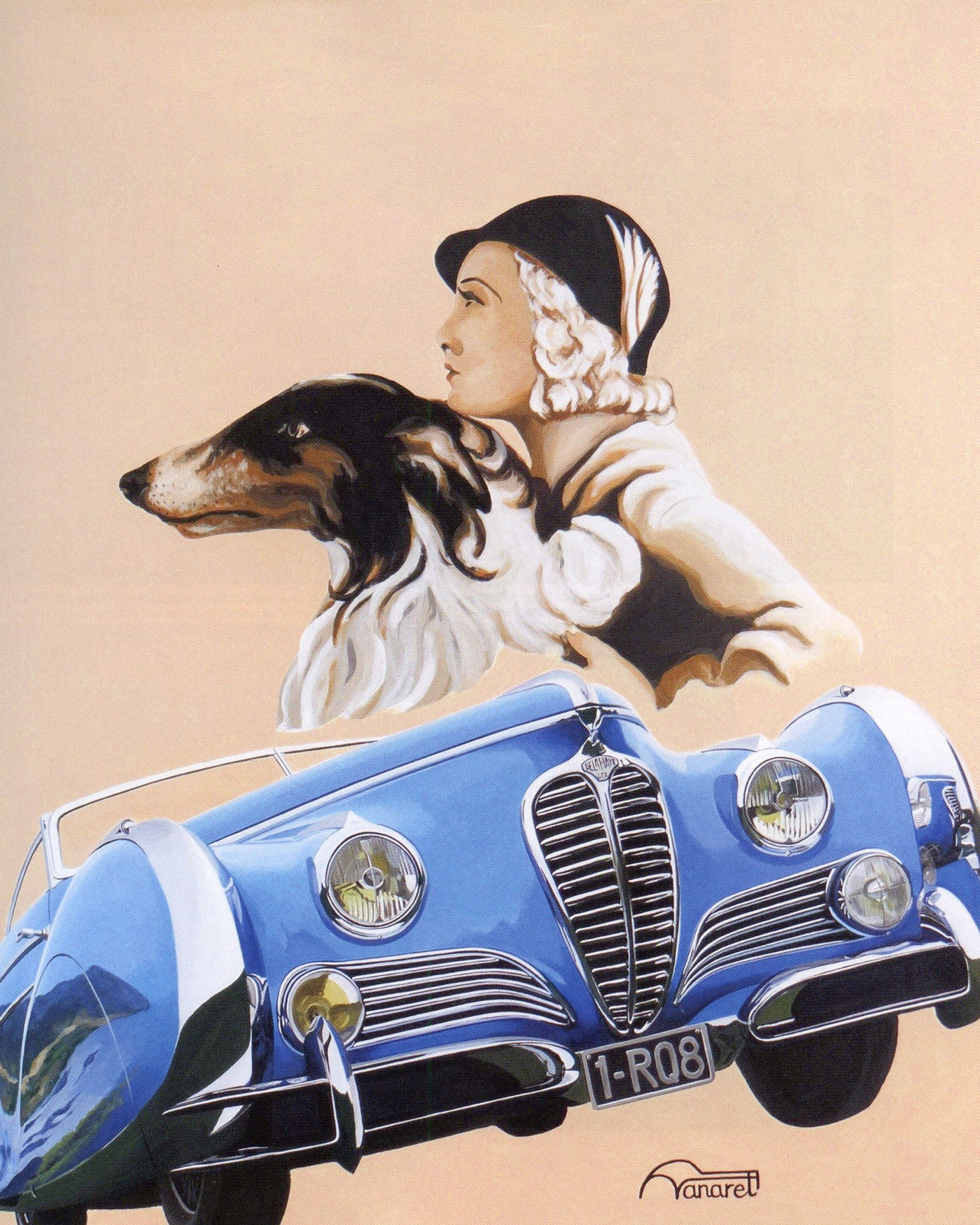
Vanaret titled this painting “Regards.” The car is a Delahaye with coachwork by Pierre Saoutchik, and it appeared at Pebble Beach in 2006.
By combining his immense talent for automotive portraiture and a love of French coachbuilders, Vanaret has assured himself a place in the pantheon of authors and historians who increasingly give us more information about the fascinating French subculture of exotic automobile design.
An artist first, Vanaret is a competent historian (even though he claims he is not). His first volume, Des Carrosses a l’Automobile, chronicled the transition from carriages to automobiles in France, roughly the period from 1900 to 1930. Vanaret had already completed a history of the coachbuilder Kellner when many readers asked for a sequel devoted to the golden age of coachbuilding. In response, now available after years of research, was The 30’s Golden Age or Swan Song.
We already have books on Kellner, we have books on Pourtout, we have volumes on Saoutchik, there are books on the French Concours, the coachbuilt Bugattis and Citroens and Renaults. The team of Larsen and Erickson have produced Joseph Figoni Le Grand Couturier de la Carrosserie Automobile Alfa Romeo Volume One. The great era of French coachbuilding is now just coming into sharp focus by a number of dedicated authors.
To the uninitiated, and perhaps many of us, all this new information could get downright confusing. Francois Vanaret’s book puts it all, or at least most of it, together in one 500 page volume. This is not an encyclopedia, but a narrative. Vanaret breaks up the book not by coachbuilder but by era.
Coachbuilding up to circa 1934…the golden age or swan song for French coachbuilders
Vanaret discusses Bugatti, Hibbard and Darrin (a great section on these Americans who dressed Duesenbergs and Isottas), the visionary Gabriel Voisin and ultimate craftsman Jacques Saoutchik, the Renault Reinastella, and the end of the classical coachwork. Concentrating on French and Italian automobiles as we do, it was refreshing to learn about the Packards, Pierce Arrows, and Duesenbergs that were coachbuilt in France by Hibbard and Darrin, who left the U.S. to open up their own coachbuilding establishment in the heart of Paris.
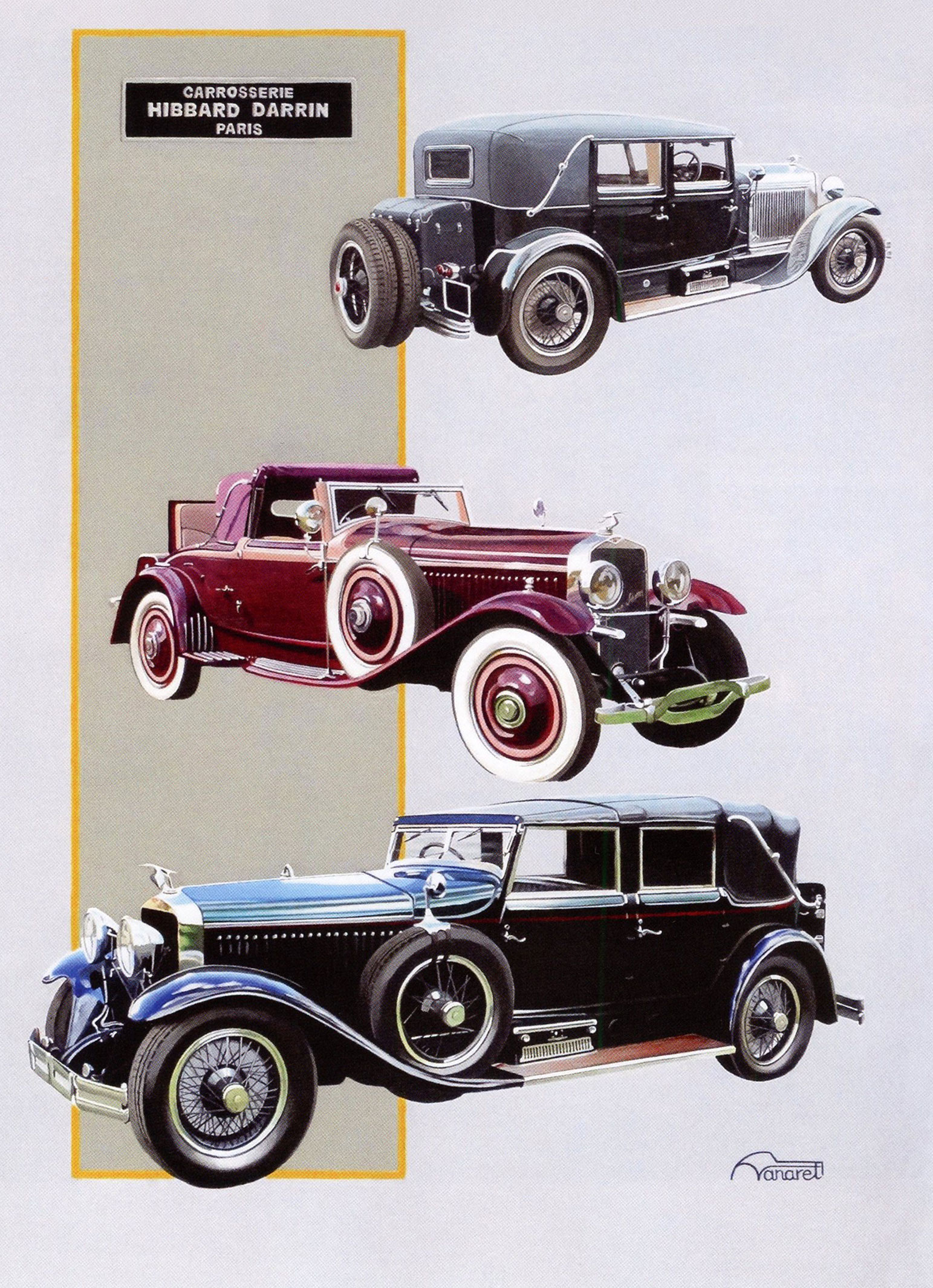
Americans in Paris Howard Darrin and Thomas Hibbard set up a shop in Paris in the late 1920s and created elegant coachwork on major luxury brands. Here Vanaret illustrates their efforts on a Hispano Suiza chassis.
Aerodynamics, the 1933 revolution….The intersection of aviation with automobiles provided new ways of thinking, new demands, new knowledge, particularly for the auto industry. The transition from the format of the carriage trade to streamlining and unit frame steel bodies was instigated by the airplane, both technically and visually. Vanaret explains how each of the factories and designers dealt with the issue…even if some weren’t quite ready for the new look. (Which is why Ettore put his foot down on Jean’s Type 57…he demanded that a traditional Bugatti grille be fully upright.)
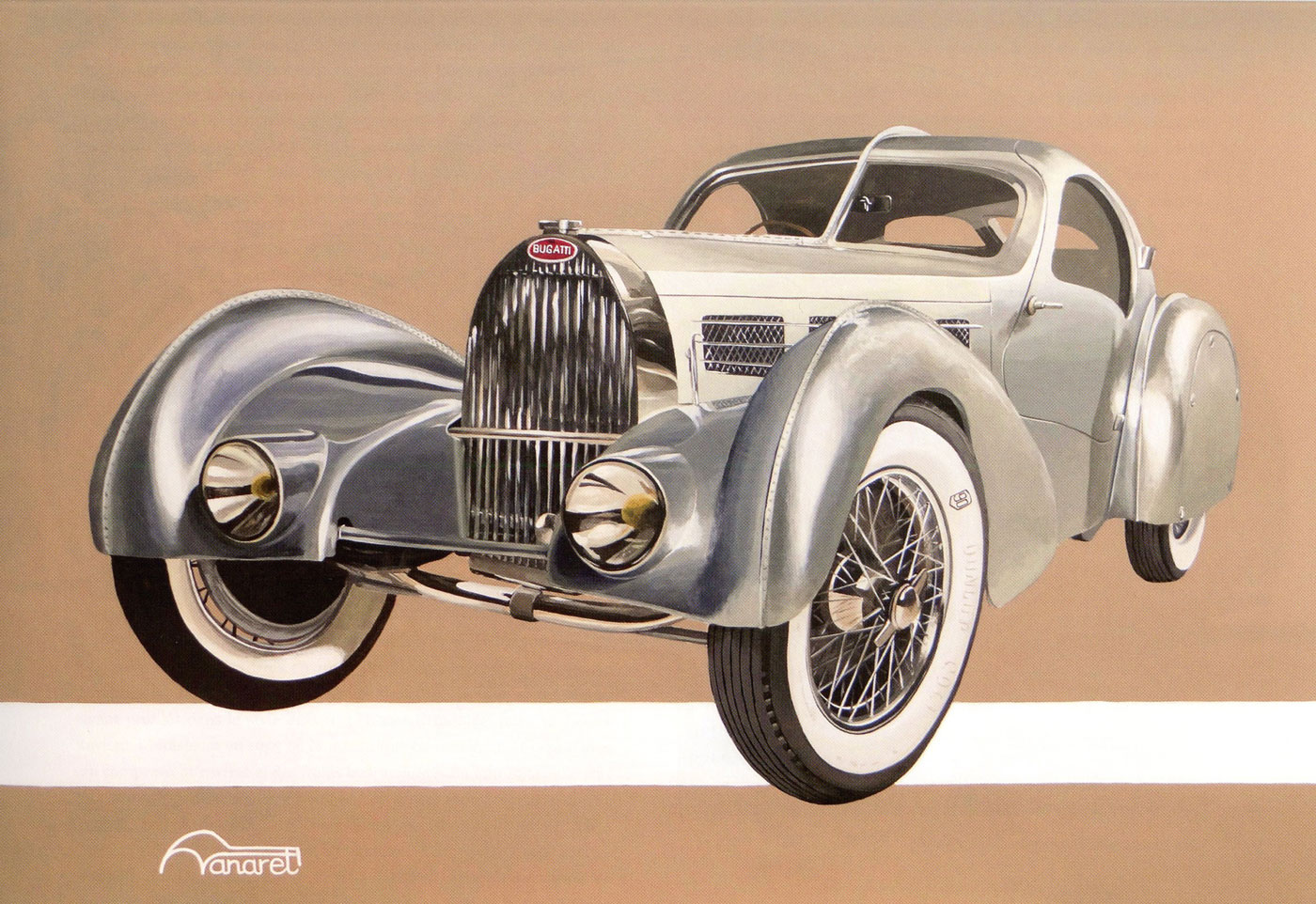
Jean Bugatti is one of Vanaret’s favorite designers. The prototype Atlantic exhibited at the 1935 Paris Motor Show was a example of streamlining, but also the insistence of Ettore to retain the traditional upright grille. Vanaret did this painting from photos provided by restorer David Grainger and his Canadian team.
Aerodynamics changed everything and dominated the second half of the 1930s. We know about many, but what about Pierre Mauboussin and the Mistral? Henri Thomas, Emile Claveau, Flaminio Bertoni, and Marcel Riffart? Vanaret chronicles these lesser lights with both historical photos and his own outstanding art. This period, along with the new ‘pontoon’ body style, would continue to influence automotive design well past WWII.
But there are three other sections that follow, and all are packed with facts, photos and art. Vanaret wants us to know the coachbuilders he considers the …”last great designers of the automobile.” Think about that statement. Hard to argue when the list includes Vanvooren, Kellner, Franay, Letourneur and Marchand, Chapron, Pourtout, and Joseph Figoni.
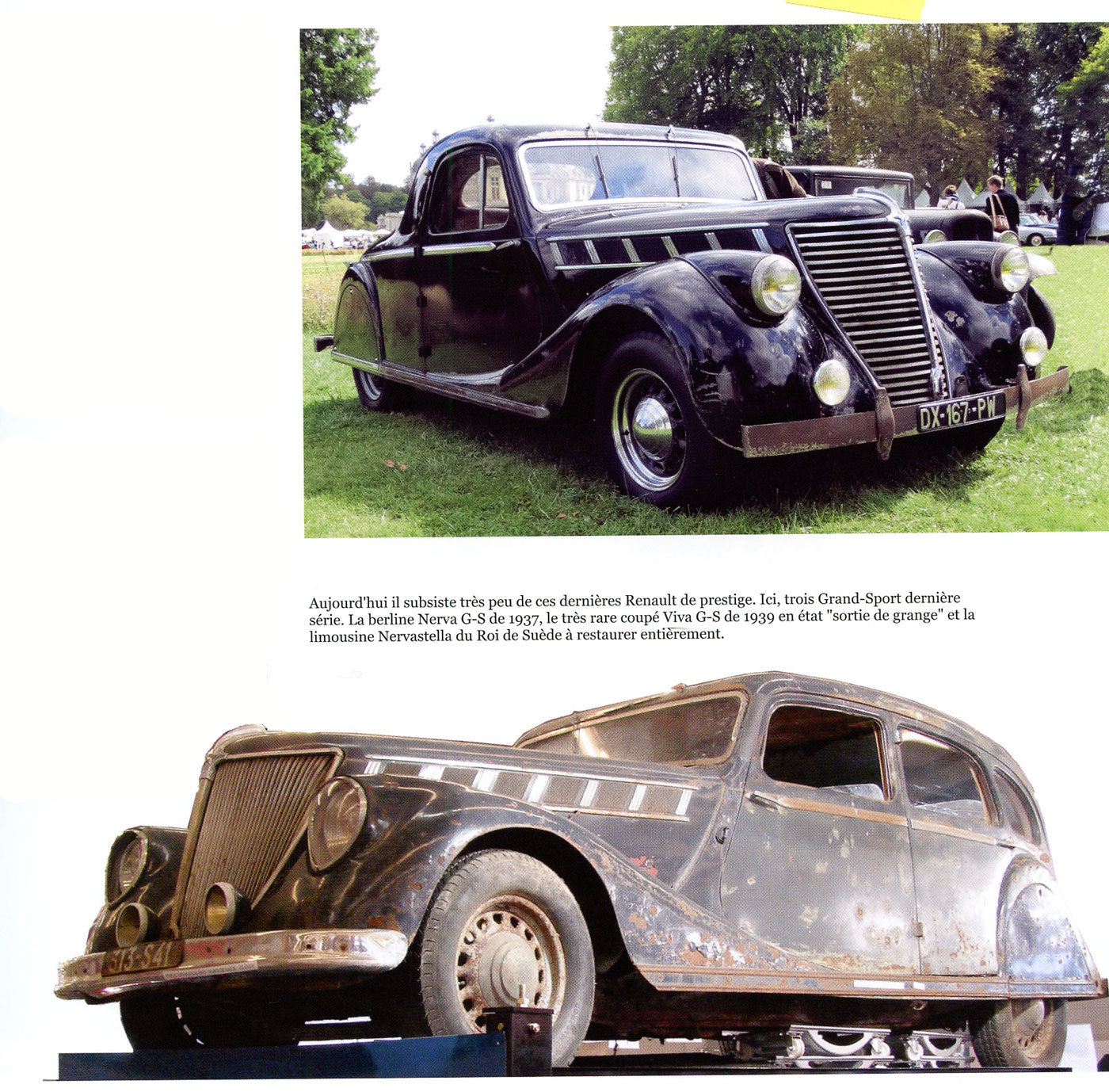
Lest we mislead readers, in addition to his art, Vanaret’s book includes hundreds of photos in both color and black and white. Here we see two rare Renaults, at the top, a 1939 Viva G-S coupe, and below the King of Sweden’s Nervastella limousine to be restored.
Perhaps our favorite section is entitled “In the shadow of the great coachbuilders,” for here we have a list of names of which we are unfamiliar: Carlo Delaisse, Jean Andreau, Etienne Brandone, and the more well-known Georges Paulin and Louis Bionier.
Vanaret ends the book with a sad look at “The Last Lights” and explains the Pons Plan, looks at Guillore, Antem, the end of Saoutchik, Jean Daninos and Facel, and wraps it up with a quick look at today’s French cars.
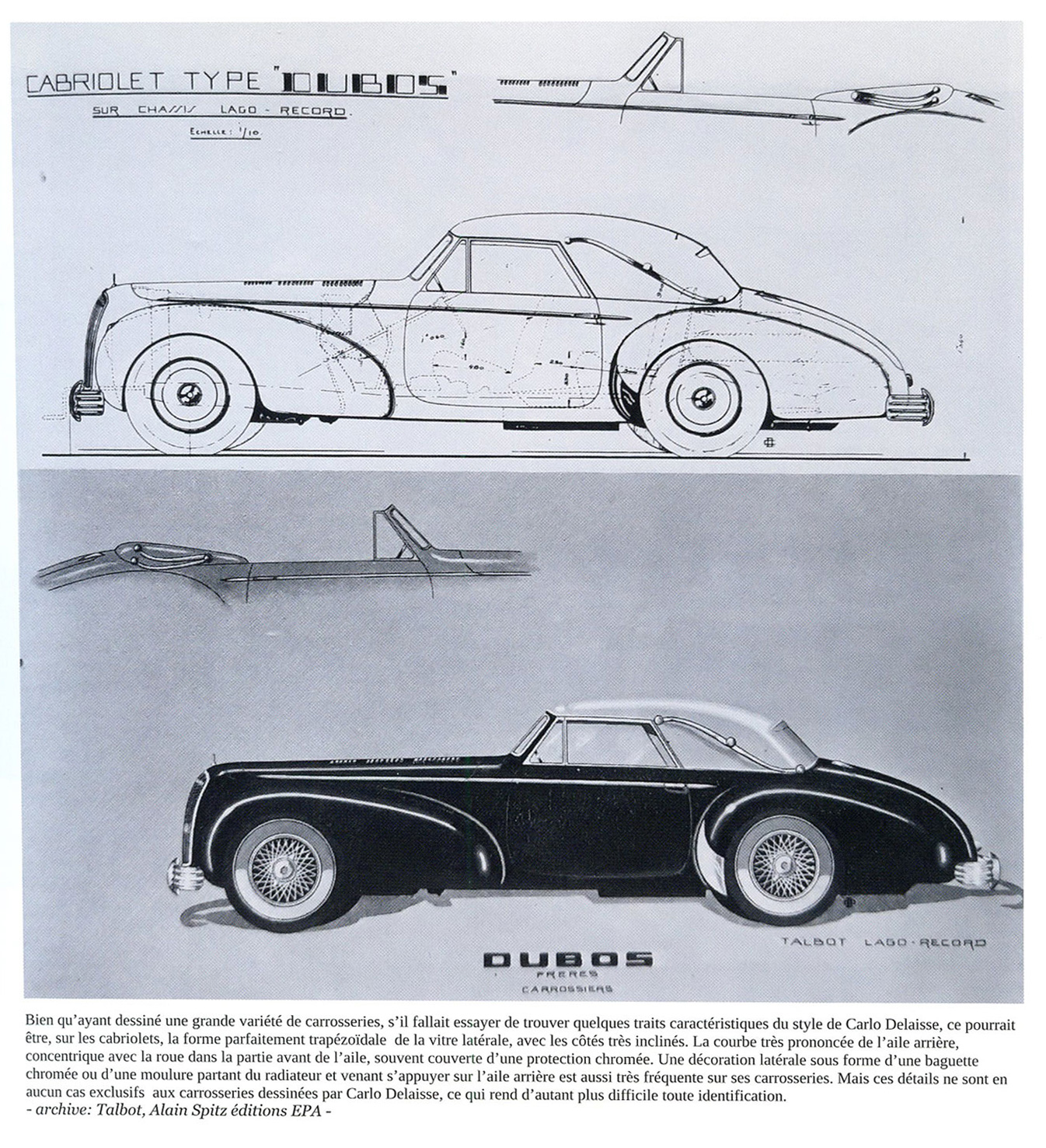
Carlos Delaisse is one of the lesser lights of French car design, but worked for Dubos to create distintive and often daring bodies.
That’s a lot of information to absorb, but the book lacks an index of any kind. Perhaps the next edition will rectify the situation. Right up front, Vanaret lets us know that his books are the “work of a passionate person, an artist who wished to share his desire for the recognition of the French bodywork as a heritage created by authentic artists and craftsmen and which must be recognized, enhanced and protected.” With that in mind, Vanaret has done an excellent job.
In the meantime, we emphatically add that there is an English translation (text only) available from Don Toms, that accompanies the French only book. Having a separate English translation booklet has its pros and cons…it is much easier to read by virtue of its size and weight, but going back and forth between the French hardcover and the English booklet is a hassle. But it does serve to focus on the subject, recall obscure items, and study rather than speed read.
Copies can be ordered from….
For those in the U.S., go directly to Donald Toms
Overseas:
https://www.gilena.it/en/publishers/editions-francois-vanaret
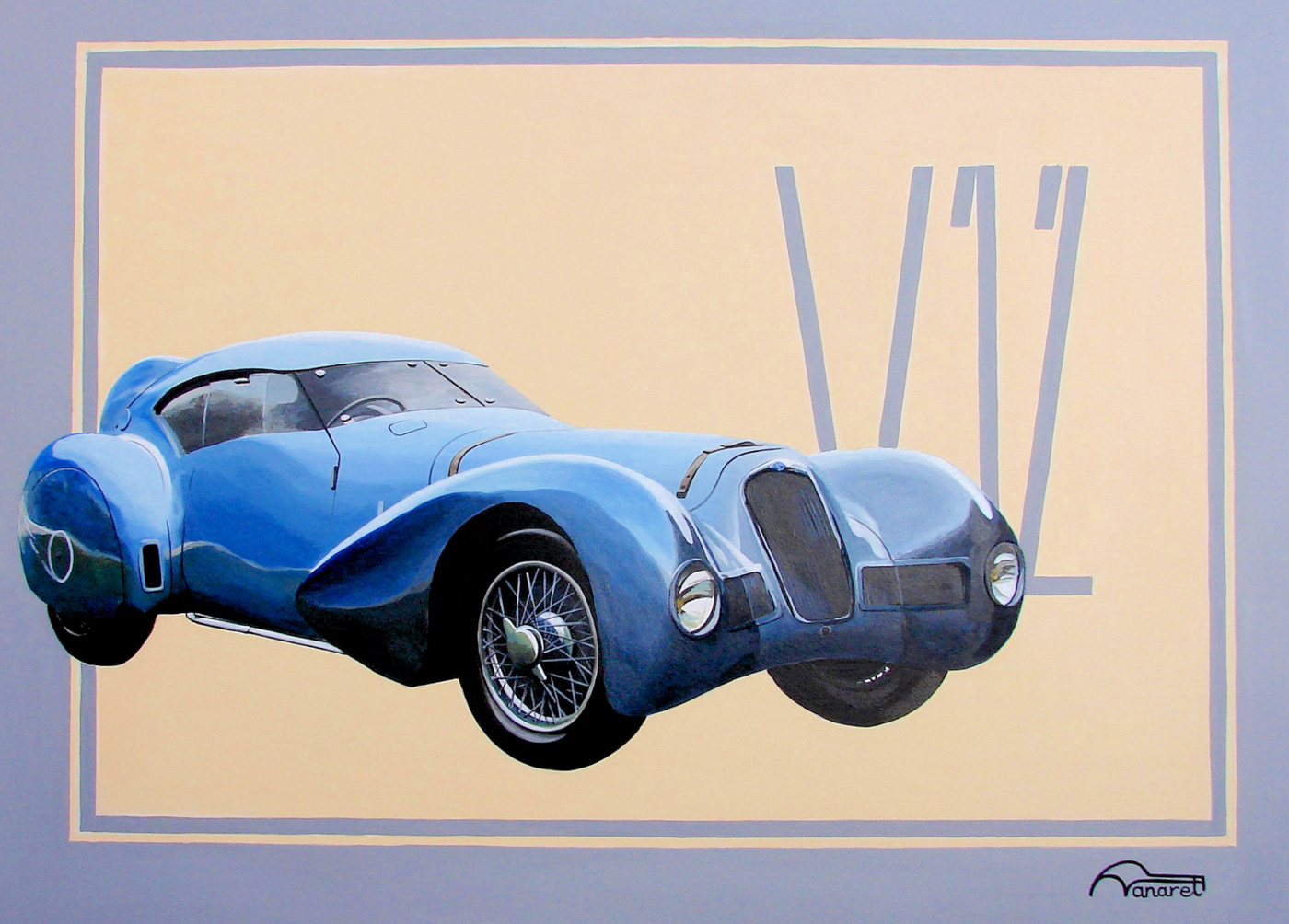

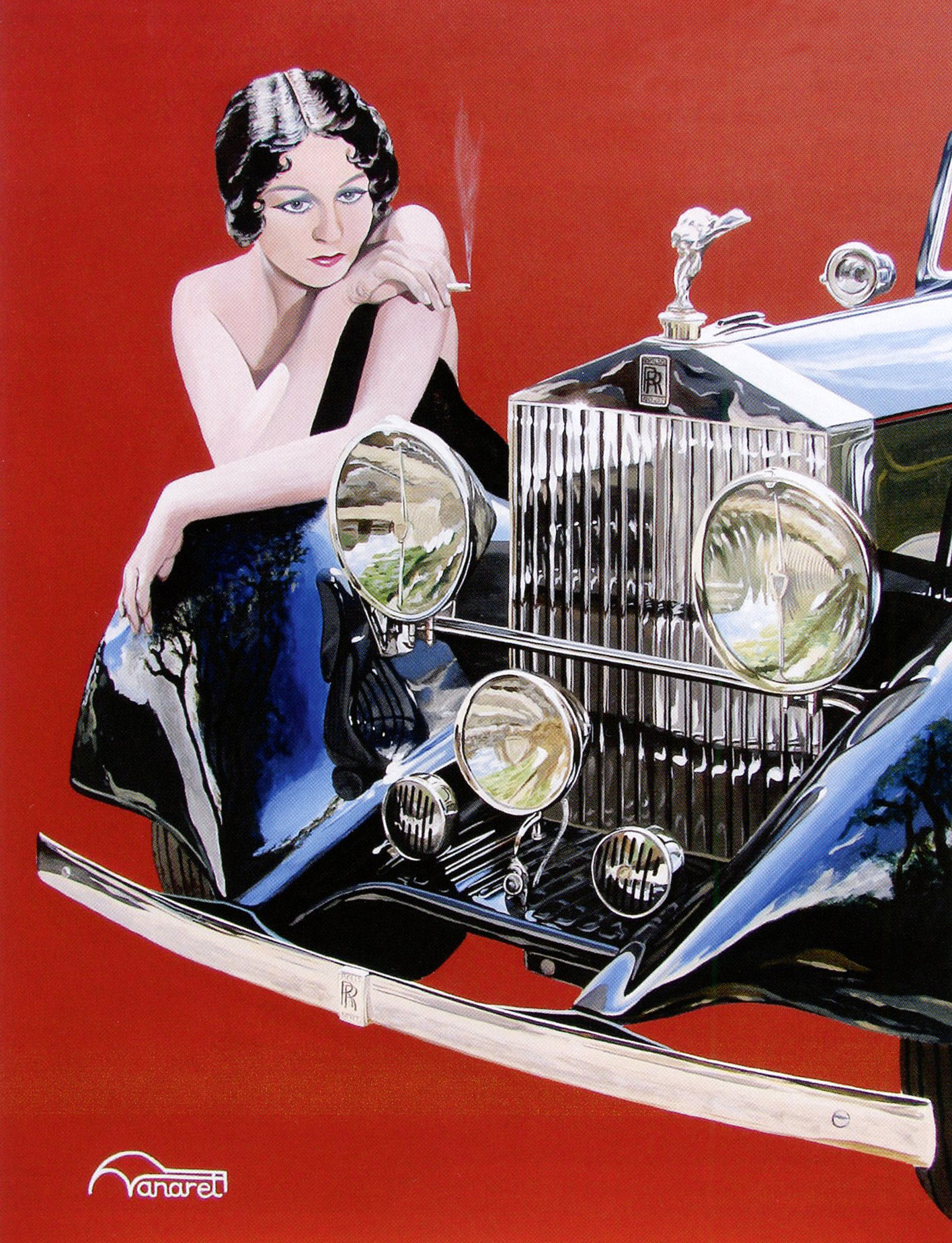

Dear Pete :
Many thanks for your great review, deserving of a great book, great artist and author.
Best, Don
Extraordinary effort by Vanaret in information and presentation. Don Toms’ addition of a translation is the perfect supplement to this, also a great effort in itself. Wonderful content !